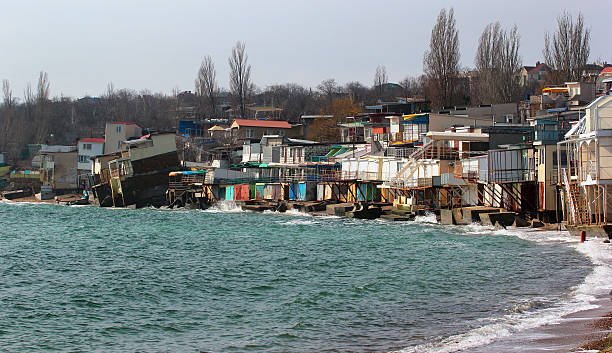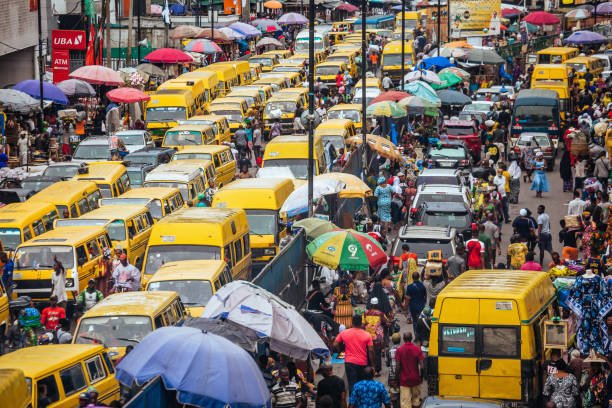On this page, we state two environmental issues that could lead to environmental injustice.
Title: Environmental Injustice: Exploring the Links between Pollution and Climate Change
Environmental injustice refers to the uneven distribution of environmental risks and benefits, often along lines of race, income, and other socioeconomic factors. It is a significant and often under-discussed aspect of many global environmental issues. Two key environmental issues that contribute to environmental injustice are pollution and climate change.
Two Environmental Issues that Could Lead to Environmental Injustice
Pollution:
Pollution, specifically in the form of air and water contamination, is a primary driver of environmental injustice. Industrial activities, waste disposal, and the use of fossil fuels often result in significant pollution. However, the burden of this pollution is not evenly distributed. Low-income communities and communities of color often bear the brunt of environmental contamination due to systemic bias, discriminatory zoning, and housing policies.
Air Pollution: Industries and power plants, primarily those burning fossil fuels, are major sources of air pollution. In many cases, these facilities are located near low-income communities, exposing residents to high levels of pollutants such as sulfur dioxide, nitrogen oxides, and particulate matter. This proximity results in adverse health impacts, including increased rates of asthma, lung cancer, and other respiratory illnesses.
Water Pollution: Similarly, low-income communities often experience disproportionate exposure to water pollution. This pollution comes from sources such as industrial waste, agricultural runoff, and inadequate waste treatment facilities. Contaminated water supplies lead to a plethora of health issues such as gastrointestinal illnesses, reproductive problems, and neurological disorders.
Climate Change:
Climate change exacerbates existing social and economic inequities, and it is another crucial factor contributing to environmental injustice. Vulnerable communities are often hit hardest by the effects of climate change, including severe weather events, sea-level rise, and increased temperatures.
Severe Weather Events: The increased frequency and intensity of severe weather events, such as hurricanes and floods, have devastating effects on communities that lack the resources to prepare, respond, and recover. These communities often have inadequate infrastructure and limited access to emergency services, leading to a higher mortality rate and economic loss.
Sea-Level Rise: Coastal communities, particularly those in developing countries, face significant risks from sea-level rise. These communities often lack the resources to invest in protective measures such as sea walls or relocation initiatives. As a result, they are disproportionately affected by property loss, displacement, and the associated social and economic impacts.
Increased Temperatures: Rising temperatures due to climate change can intensify urban heat islands, particularly impacting low-income urban communities. These areas, with their dense construction and lack of green spaces, typically experience higher temperatures than surrounding regions, leading to increased heat-related illnesses and deaths.
Pollution and climate change are two environmental issues that contribute to environmental injustice. Addressing these issues requires systemic change, including a move towards cleaner energy sources, stricter regulations on pollution, and investment in climate resilience, especially in vulnerable communities. To create a more equitable future, it’s crucial to consider environmental justice in all environmental policy and planning.
Environmental injustice examples around the world
Environmental injustice can manifest in numerous ways around the world, from exposure to toxic pollutants to the unequal distribution of resources or the impacts of climate change. Here are ten examples of environmental injustice in various global contexts:







- Flint Water Crisis, USA: In 2014, the city of Flint, Michigan, switched its water supply to a polluted river, leading to lead contamination. This crisis predominantly affected lower-income communities and people of color, resulting in serious health consequences.
- Delhi Air Pollution, India: Delhi, one of the world’s most polluted cities, sees low-income communities disproportionately impacted. These communities often lack access to indoor air filtration and are more likely to have jobs requiring them to be outdoors, leading to higher exposure levels.
- Oil Extraction in the Niger Delta, Nigeria: Oil extraction and spills have led to widespread water contamination and environmental degradation. These activities disproportionately affect local communities, leading to health problems and economic disruption, while the benefits are reaped by distant corporations and elites.
- E-Waste in Agbogbloshie, Ghana: Agbogbloshie, a district in Accra, has become one of the world’s largest e-waste dumpsites. Workers, often from impoverished backgrounds, are exposed to toxic materials from the discarded electronics, resulting in significant health risks.
- Deforestation in the Amazon, Brazil: Deforestation for agriculture, mining, and logging disproportionately impacts indigenous communities. It destroys their homes and livelihoods, leading to displacement and cultural loss.
- Navajo Uranium Mining, USA: Uranium mining in the Navajo Nation has resulted in widespread radiation contamination. Despite the cessation of mining, the Navajo people still suffer from health problems, such as lung cancer and kidney disease.
- Pesticide Exposure among Farmworkers, California, USA: Farmworkers, many of whom are immigrants, are regularly exposed to harmful pesticides. This leads to an array of health issues, including cancer, neurological disorders, and birth defects.
- Air Pollution in Ulaanbaatar, Mongolia: With the increasing use of coal for heating due to harsh winters, air pollution has skyrocketed. This affects the city’s impoverished communities most, causing severe health issues, including respiratory diseases.
- Coal Mining in Jharia, India: In Jharia, coal fires have been burning for over a century, causing severe air pollution. Local communities, often low-income, face health risks such as lung diseases.
- Climate Change in the Maldives: As a low-lying island nation, the Maldives is particularly vulnerable to sea-level rise caused by climate change. This leads to environmental refugees, as people are forced to relocate due to their homes becoming uninhabitable.
These examples demonstrate the broad reach of environmental injustice. The cases cut across continents and involve a range of environmental challenges, but in each case, the brunt of the harm falls disproportionately on disadvantaged communities.

